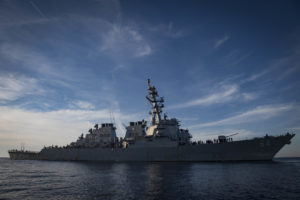
The U.S. military would benefit from having two more destroyers stationed in Europe, and increased ship capacity overall, U.S. European Command’s leader said March 5. Speaking at a Senate Armed Services Committee (SASC) hearing Tuesday on Capitol Hill, Army Gen. Curtis Scaparrotti told lawmakers he has requested for two additional destroyers to be stationed in his area of responsibility to keep up with Russia’s “evolving and modernizing” fleets. “If we want to remain dominant in the maritime domain, and particularly…

 By
By 











